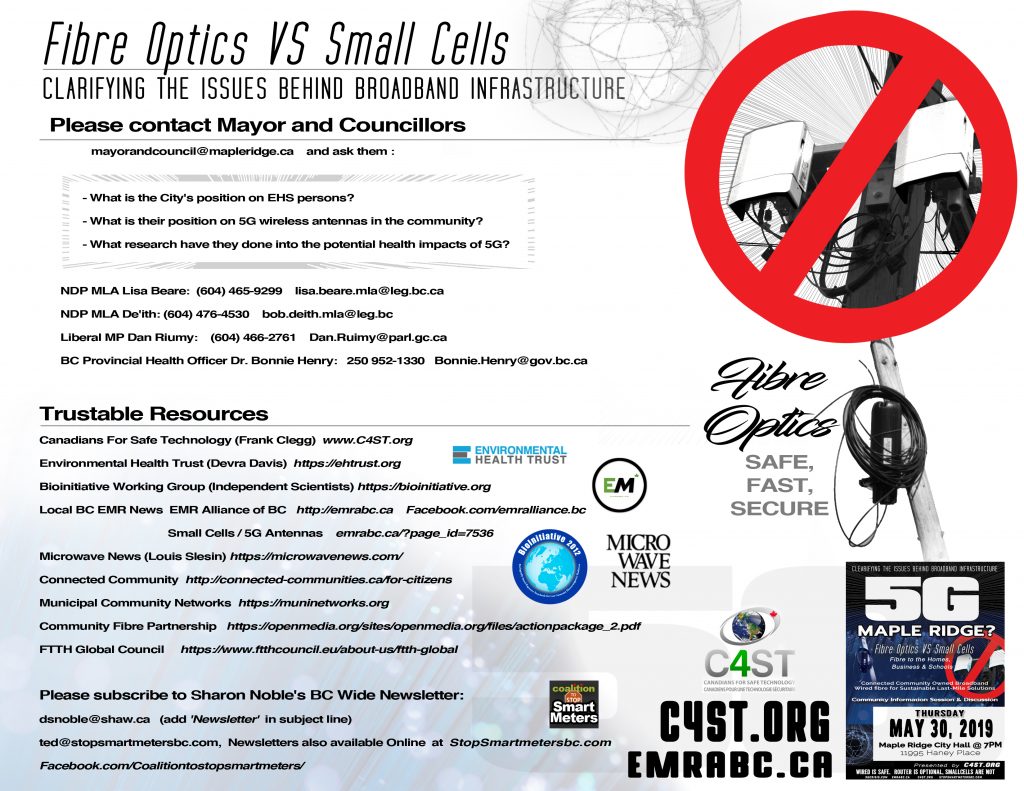“Pure Fibre” is really called “Fibre to the NODE Network”
Telus speaks of faster speeds, but they do not want you to know about the WIRELESS ANTENNAS that will emit radiation 24/7
If Telus was really serious about keeping customers, they would REMOVE the radio frequency and WIRE everything – with only the option to those who want wireless.
However its set up the other way around, Those who do NOT want wireless from Telus are getting stuck with it, even though they insisted they did not want it.
Fibre to the Node means : “FTTN/C is seen as an interim step towards full FTTH and in many cases triple-play services delivered using this approach have been proven to grow subscriber numbers and ARPU considerably[22][23][24] FTTN/C is currently used by a number of operators, including AT&T in the United States, Germany’s Deutsche Telekom, Greece‘s OTE, Swisscom, TIM in Italy, Proximus in Belgium, nbn™ in Australia, and Canadian operators Telus, Cogeco and Bell Canada.
Areas of Vancouver ALREADY installed
Edmonton Small Cells ALREADY Installed on 137th Ave
Fibre Optics ONLY Network :
Safe, Secure, Save Money, Expandable, Source of Revenue for City
Handout from a recent meeting in BC about Fibre Optic ONLY Networks :
Why Fiber is Vastly Superior to Cable and 5G
“… arguments by the U.S. telecommunications industry that 5G or currently existing DOCSIS cable infrastructure are more than up to the task of substituting for fiber have confused lawmakers, reporters, and regulators into believing we do not have a problem. In response, EFF has recently completed extensive research into the currently existing options for last mile broadband and lays out what the objective technical facts demonstrate. By every measurement, fiber connections to homes and businesses are, by far, the superior choice for the 21st century. It is not even close….
The American story of broadband deployment is a tragic one where your income level determines whether you have competition and affordable access. In the absence of national coverage policies, low-income Americans and rural Americans have been left behind. This stands to get worse absent a fundamental commitment to fiber for everyone. Our current situation and outlook for the future like did not happen in a vacuum—policy decisions made more than a decade ago, at the advent of fiber deployment in the United States, have proven to be complete failures when it comes to universal access. EFF’s review of the history of those decisions in the early 2000s has shown that none of the rationales have been justified by what followed.”
https://www.eff.org/deeplinks/2019/10/why-fiber-vastly-superior-cable-and-5g

